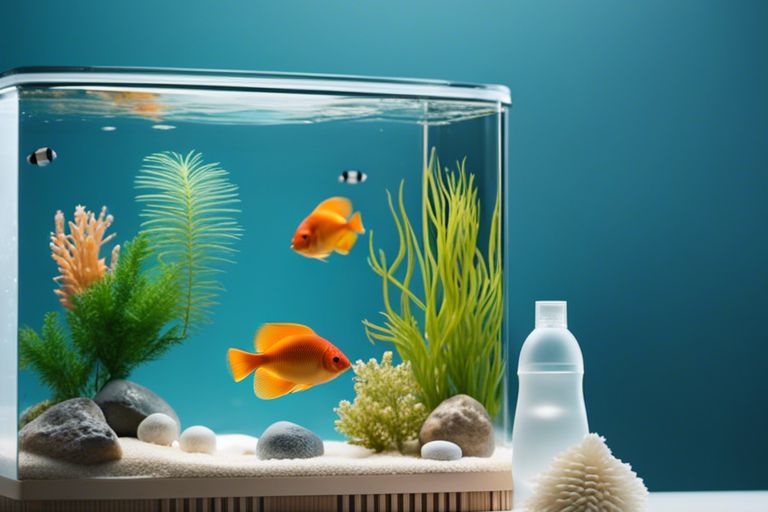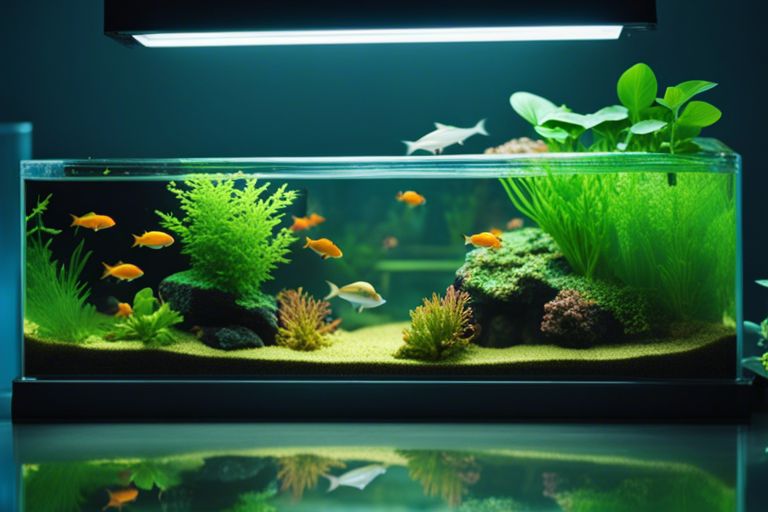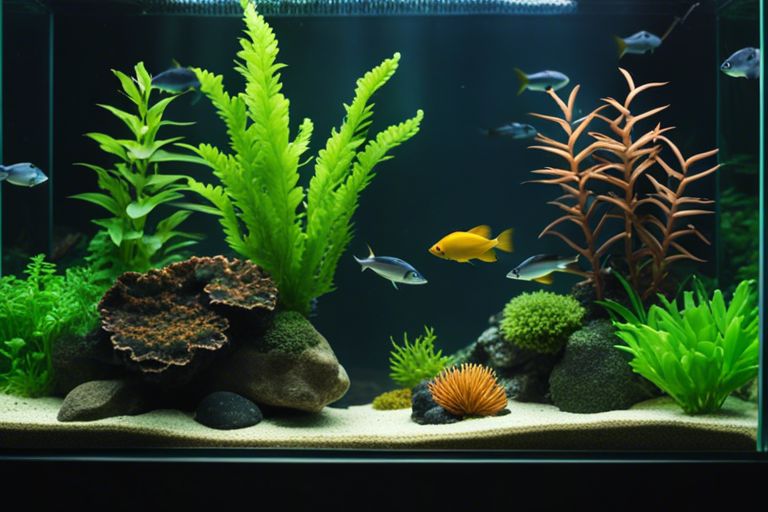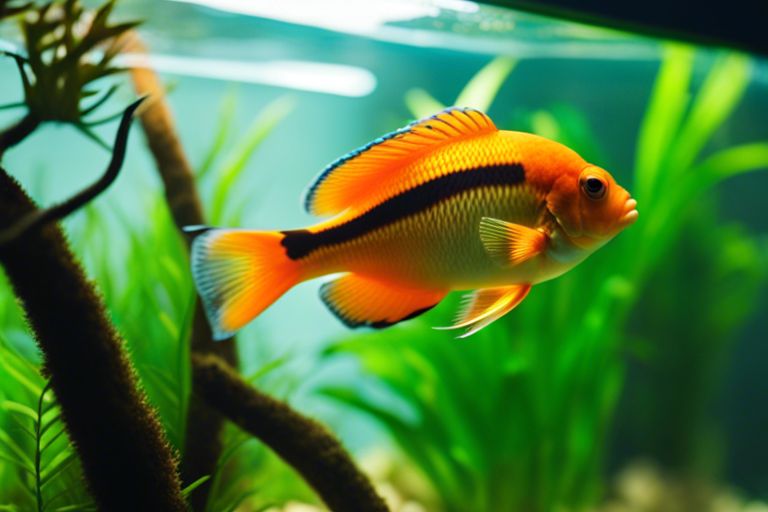There’s a delicate balance required to keep a fish tank clean and healthy for its inhabitants. In this top 10 list, we will research into necessary tips to help you maintain a spotless environment that promotes the well-being of your aquatic pets. Whether you’re a seasoned aquarist or just starting out, these tips will guide you towards achieving a pristine and thriving aquarium ecosystem.
Regular Water Changes
Schedule Consistency
One of the most important aspects of maintaining a clean fish tank is to establish a consistent schedule for water changes. Regular water changes help remove toxins and waste buildup, ensuring a healthy environment for your fish. Set a specific day and time each week for water changes to make it a routine part of your tank maintenance.
Correct Proportions
Some aquarists make the mistake of not changing enough water during water changes, leading to a buildup of harmful substances in the tank. It is important to change about 10-20% of the water in your tank every 1-2 weeks. This will help dilute toxins and ensure a balanced ecosystem for your fish to thrive in.
Proportions matter when it comes to water changes in your fish tank. By changing a small percentage regularly, you can maintain water quality without causing stress to your fish. Avoid changing too much water at once as this can disrupt the delicate balance of the tank’s ecosystem. Stick to the recommended proportions to keep your fish happy and healthy.
Filter Maintenance
Clean Regularly
It is crucial to clean your fish tank filter regularly to ensure it functions effectively. Over time, debris and waste will accumulate in the filter, clogging it and reducing its efficiency. To prevent this, follow the manufacturer’s instructions for cleaning the filter. Generally, you should rinse mechanical filter media in tank water every 2-4 weeks to remove trapped debris.
Replace Media
Some filters have replaceable media that need to be changed periodically. Carbon, for example, should be replaced every 2-4 weeks to maintain its effectiveness in removing toxins and odors from the water. Biological media, like ceramic rings or bio-balls, should be replaced every 6-12 months to ensure your filter continues to support beneficial bacteria colonies.
Maintenance of your filter is crucial for the overall health of your fish tank. A well-maintained filter will keep the water clean and clear, providing a healthy environment for your fish to thrive. Take the time to clean and replace filter media regularly to avoid any issues and enjoy a happy, thriving aquarium.
Algae Control
Scrub Walls
One of the key tasks in maintaining a clean fish tank is regularly scrubbing the walls. Algae tends to build up on the glass, affecting the visibility and overall appearance of the tank. Use a algae scrubber or a magnet cleaner to easily remove algae from the walls of the tank. Make sure to clean the scrubber or cleaner after each use to prevent the spread of algae.
Limit Light
You’ll want to limit the amount of light your fish tank receives to control algae growth. Excessive light can promote algae growth, leading to green water and unsightly brown spots in the tank. Consider using a timer to regulate the amount of light your tank gets each day. Aim for 8-10 hours of light for freshwater tanks and 10-12 hours for saltwater tanks to maintain a healthy balance and limit algae growth.
Algae thrives in the presence of light and nutrients, such as from fish waste and excess food. By controlling the amount of light your tank receives, you can help prevent algae blooms and keep your fish tank looking clean and healthy.
Substrate Cleaning
Vacuum Gravel
If you want to maintain a clean and healthy fish tank, regular vacuuming of the gravel is vital. If left uncleaned, debris and waste can accumulate in the substrate, leading to ammonia buildup and poor water quality. Using a gravel vacuum, you can easily remove dirt, uneaten food, and fish waste from the gravel bed, helping to prevent harmful spikes in ammonia levels.
Remove Debris
The key to a thriving aquatic environment is to remove debris promptly. The buildup of organic matter can break down and release harmful toxins into the water, posing a risk to the health of your fish. Regularly remove any uneaten food, dead plant matter, and other debris that settles on the substrate to maintain a clean and balanced ecosystem in your fish tank.
The substrate in your fish tank plays a crucial role in housing beneficial bacteria that help to break down waste and maintain water quality. Regularly cleaning the substrate not only keeps your tank looking pristine but also ensures a healthy environment for your aquatic pets. Use a gentle touch when cleaning to avoid disrupting the beneficial bacteria population.
Test Water Quality
Check Parameters
Water quality is crucial for the health of your fish. To maintain a clean and healthy environment, regularly test the water parameters such as pH, ammonia, nitrite, and nitrate levels. These parameters can fluctuate and it’s important to catch any imbalances early to prevent harm to your fish.
Adjust Accordingly
To maintain optimal water quality, it is vital to adjust the water parameters as needed. If you find that the pH levels are too high or too low, you can use pH adjusters to bring it to the appropriate range. Similarly, if the levels of ammonia, nitrite, or nitrate are high, perform partial water changes and consider adding a biological filtration system to help remove these toxins.
Keeping a record of your water parameters over time can help you identify any patterns or trends in your tank’s water quality. This information can be valuable in preventing future issues and maintaining a clean and healthy environment for your fish.
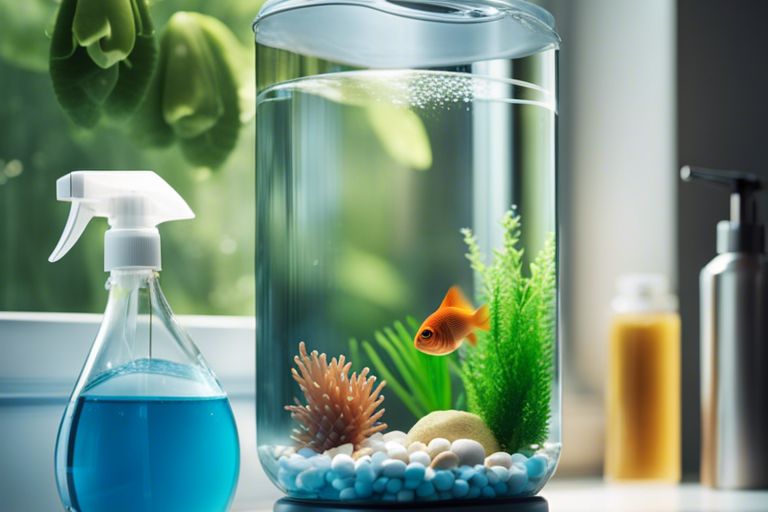
Prune Plants
Now let’s talk about the importance of pruning and trimming your aquarium plants regularly. Pruning is vital to ensure a healthy and visually appealing aquatic environment for your fish.
Remove Dead
One of the most crucial aspects of plant maintenance in your fish tank is to remove any dead or decaying plant material promptly. These decaying leaves or stems can release harmful toxins into the water, affecting the water quality and the health of your fish. Use sharp, clean scissors to trim off any dead parts of the plant to prevent them from causing further issues in your aquarium.
Encourage Growth
To encourage the growth of your aquarium plants, you can consider using fertilizers specifically designed for aquatic plants. These fertilizers provide vital nutrients like nitrogen, phosphorus, and potassium that are vital for healthy plant growth. Additionally, ensure that your plants are getting enough light and carbon dioxide to thrive in their underwater environment.
Dead or decaying plant matter not only impacts the overall aesthetics of your fish tank but can also lead to nutrient imbalances and poor water quality. Regularly monitoring and maintaining your plants will help create a balanced ecosystem for your aquatic pets to thrive in.
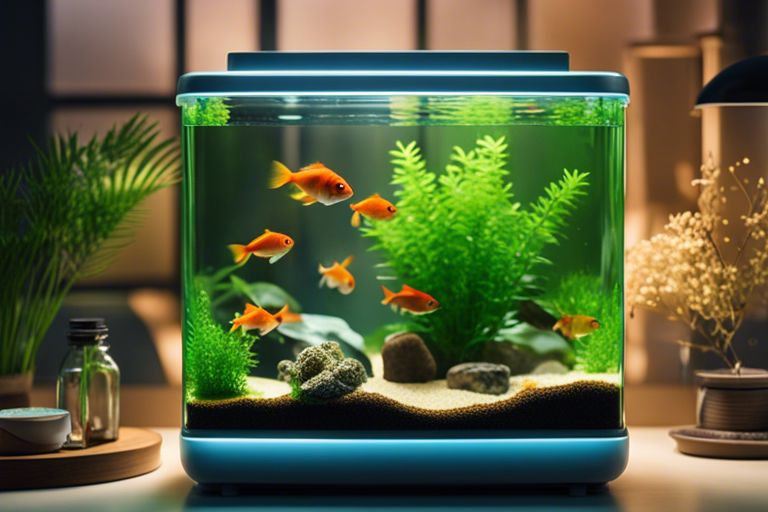
Controlled Feeding
Avoid Overfeeding
Now, one of the most common mistakes fish owners make is overfeeding their aquatic pets. Overfeeding can lead to uneaten food accumulating at the bottom of the tank, causing water quality issues and potentially harming the fish. To avoid overfeeding, make sure to feed your fish small amounts of food at a time and only feed them as much as they can consume within a few minutes.
Monitor Amount
Any dedicated fish owner knows the importance of monitoring the amount of food their fish consume. By observing how much food your fish eats during each feeding, you can adjust the quantity accordingly. Fish should be able to finish their meal within a couple of minutes. If you notice uneaten food sinking to the bottom of the tank, you may be feeding your fish too much.
Amount
It’s crucial to strike a balance when it comes to feeding your fish. While it’s necessary to provide them with enough food to meet their nutritional needs, overfeeding can lead to a build-up of toxins in the tank and pose a threat to the overall health of your fish. By monitoring the amount of food you give your fish and being mindful of their eating habits, you can ensure a clean and healthy environment for your aquatic friends.
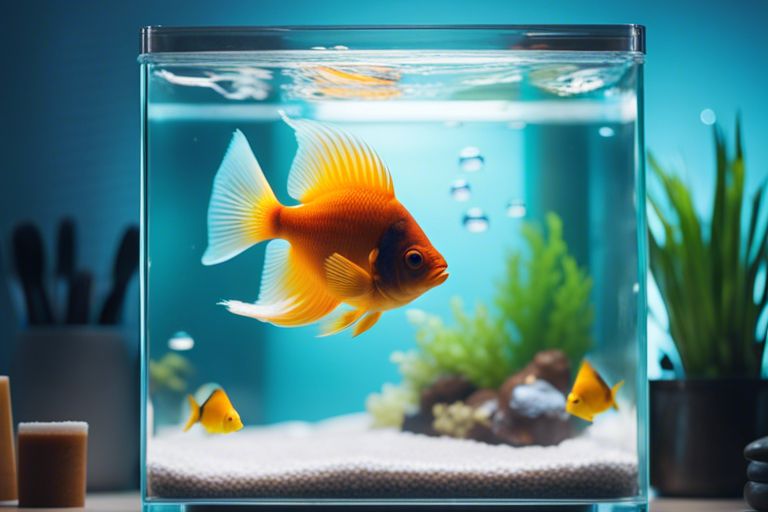
Aquascaping Adjustments
Rearrange Carefully
All aquascaping adjustments should be made with caution to ensure the well-being of your aquatic pets. When rearranging the decorations in your fish tank, remember to handle delicate plants and ornaments gently to avoid causing stress to your fish. Sudden changes in the environment can disrupt the balance of your tank and affect the health of your fish.
Inspect Decorations
Any decorations in your fish tank should be regularly inspected for signs of wear and tear. Check for sharp edges or rough surfaces that could injure your fish. It’s also imperative to ensure that decorations are securely anchored to prevent them from toppling over and potentially harming your aquatic pets.
Plus, always rinse new decorations thoroughly before adding them to your tank to remove any dust, dirt, or chemicals that could contaminate the water. This extra step will help maintain the cleanliness of your fish tank and create a safe environment for your fish to thrive.
Quarantine New Additions
Prevent Diseases
To prevent the introduction of diseases to your existing fish population, it is necessary to quarantine new additions before adding them to your main tank. Any new fish or plants should be kept separate in a quarantine tank for a minimum of two weeks. This will help you observe them for any signs of illness or parasites before they can spread to your other aquatic residents.
Acclimate Properly
With proper acclimation, you can minimize stress on new additions and increase their chances of survival in your aquarium. A recommended method is drip acclimation, where you slowly drip water from the main tank into the quarantine tank over a period of time. This gradual process helps the new fish adjust to the water parameters and temperature of your aquarium.
Summing Up
Following this Top 10 Tips For Maintaining A Clean Fish Tank will ensure a healthy and thriving aquatic environment for your fish. By staying on top of regular maintenance tasks, such as water changes, filter cleaning, and gravel vacuuming, you can prevent common issues like algae growth and disease outbreaks. Remember to also monitor water parameters, keep an eye on your fish for any signs of illness, and provide proper nutrition. With dedication and consistency, you can enjoy a beautiful and crystal-clear fish tank that both you and your fish will appreciate.
FAQ
Q: Why is maintaining a clean fish tank important?
A: Maintaining a clean fish tank is crucial for the health and well-being of your fish. Dirty tanks can lead to various issues like ammonia spikes, disease outbreaks, and poor water quality.
Q: How often should I clean my fish tank?
A: It is recommended to perform regular maintenance on your fish tank, including partial water changes and gravel vacuuming, at least once a week.
Q: What are the top 10 tips for maintaining a clean fish tank?
A: The top 10 tips for maintaining a clean fish tank are:
1. Regular water changes
2. Use a gravel vacuum
3. Monitor water parameters
4. Clean tank decorations
5. Avoid overfeeding
6. Do not overstock your tank
7. Use a good filtration system
8. Regularly clean the filter
9. Quarantine new fish
10. Keep a consistent maintenance schedule.
Q: How much water should I change in my fish tank?
A: It is recommended to change 10-15% of the water in your fish tank every week. This helps remove excess waste and replenish necessary minerals for your fish.
Q: How can I prevent algae growth in my fish tank?
A: To prevent algae growth, ensure your tank is not exposed to direct sunlight, limit the amount of fish food to prevent excess nutrients, and maintain proper water parameters like pH and nitrate levels.
Q: Why is overfeeding harmful to fish in a tank?
A: Overfeeding can lead to excess waste production, which can cause ammonia spikes and poor water quality. It can also lead to health issues like obesity in fish.
Q: How can I maintain a clean fish tank while on vacation?
A: Before going on vacation, perform a thorough cleaning of the tank, automate the feeding process with a reliable feeder, and ask a trusted friend or neighbor to check on the tank periodically.
